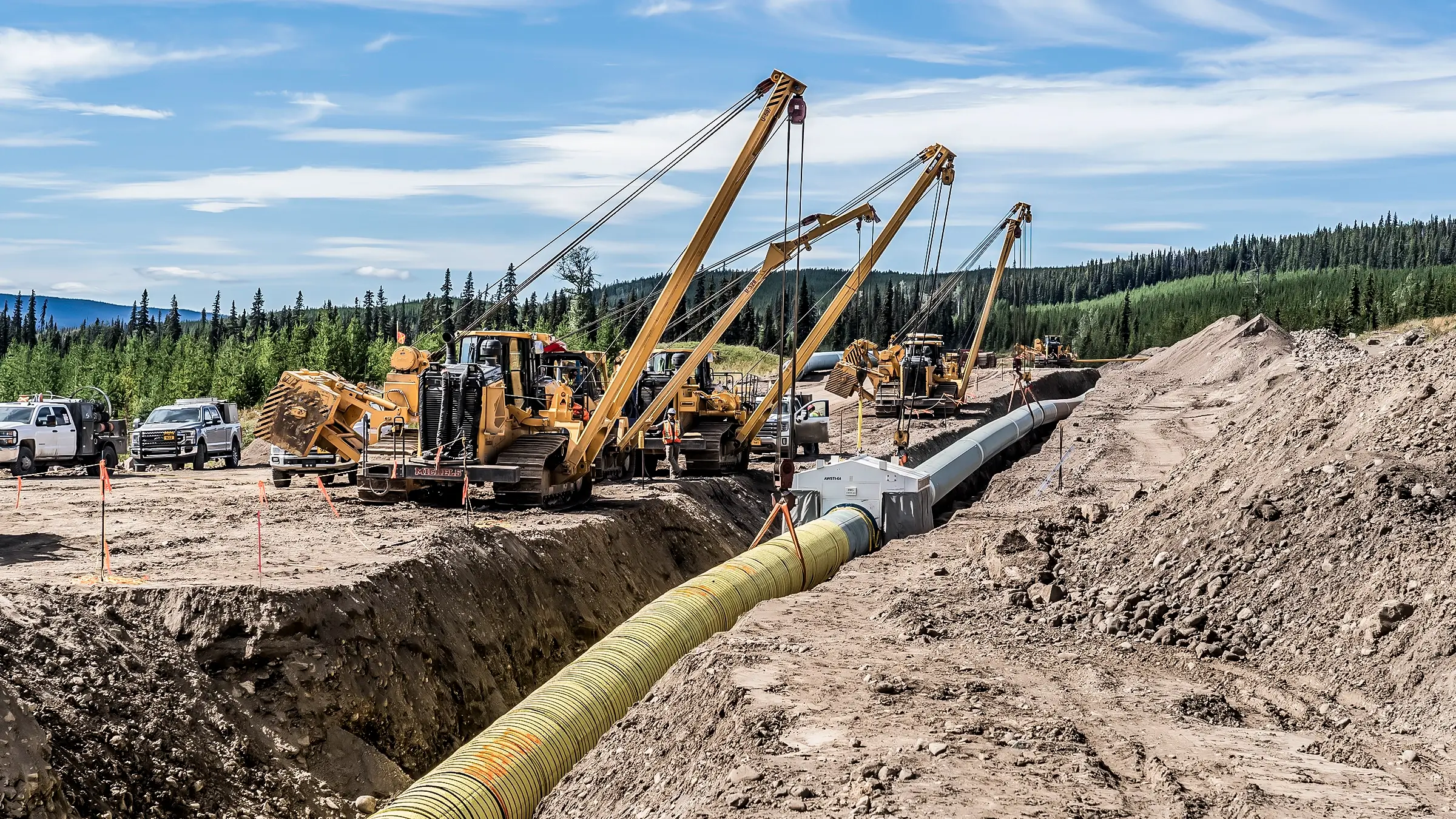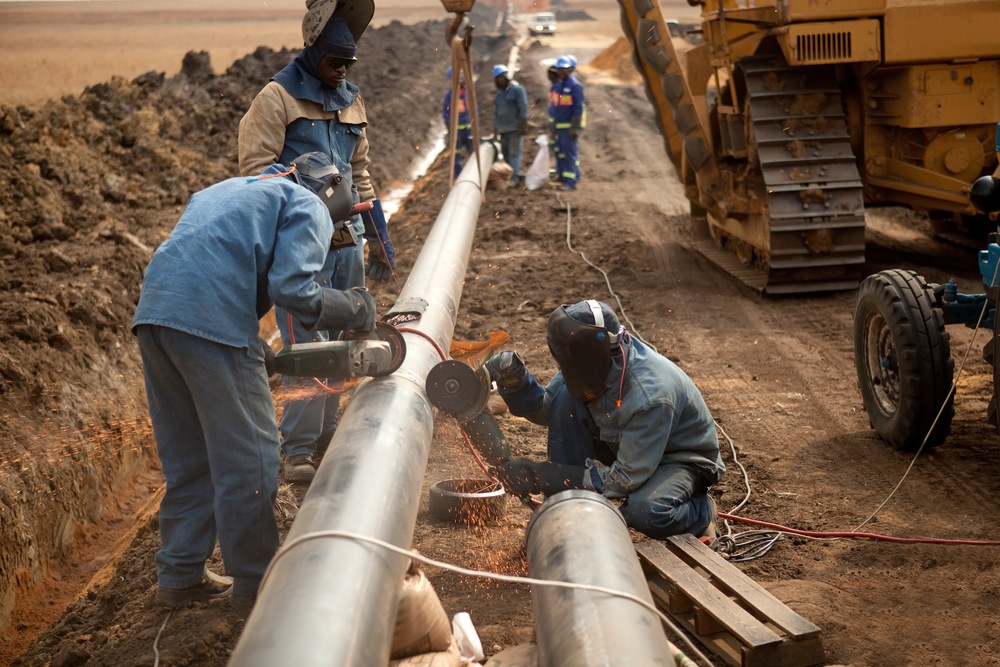Going Green With Creek Pipe HDPE installation Techniques
The Value of Pipeline Construction: Discovering the Services Supplied in the Market
Pipeline construction is an essential part of contemporary infrastructure. It helps with the transportation of necessary sources like oil, gas, and water. The market incorporates different services, consisting of preparation, site preparation, and setup. Each stage calls for precision and adherence to safety and security criteria. As areas depend on these systems for their livelihoods, understanding the intricacies of pipe construction discloses its value and possible obstacles. What aspects influence the success of these tasks?
Summary of Pipeline Construction Providers
Pipeline construction services incorporate a series of specialized activities designed to help with the setup of pipelines for carrying different compounds, consisting of oil, gas, and water. These solutions typically include site preparation, excavation, setup of pipeline sectors, and backfilling. Competent labor and sophisticated devices are basic for guaranteeing each phase is executed with precision and safety.Safety protocols are critical, as these jobs frequently involve working with dangerous products and in difficult settings. Quality assurance steps establish that the pipes fulfill industry criteria and regulations. In addition, the services may include trenchless innovation, which minimizes surface disruption.Environmental considerations play a significant role in pipeline construction, requiring evaluations and mitigations to protect surrounding ecological communities. Generally, pipeline construction services are crucial for establishing the facilities required for power and water circulation, supporting both economic growth and social needs.
Planning and Design in Pipeline Projects
Reliable planning and layout are important parts of effective pipeline jobs, ensuring that all aspects are meticulously attended to prior to construction begins. This stage involves thorough feasibility researches that assess the technical, economic, and ecological aspects influencing the task. Engineers and designers collaborate to produce in-depth strategies that describe the pipeline path, materials, and construction techniques, straightening with regulatory needs and industry standards.Advanced software program and modeling techniques are often utilized to mimic various situations, enhancing the design for efficiency and security. Ecological effect assessments are conducted to mitigate prospective injury to environments and neighborhoods, showing a commitment to sustainable methods. Additionally, stakeholder involvement is necessary, cultivating interaction and addressing problems from impacted parties. Inevitably, reliable planning and style established the structure for a pipeline task, decreasing threats and making sure a structured construction process, ultimately adding to the total success of the procedure.
Site Preparation and Excavation
Thorough site preparation and excavation are necessary action in the pipeline construction process. This phase includes an in-depth analysis of the land where the pipe will certainly be installed. Project teams conduct surveys to determine dirt kinds, topography, and existing energy lines to assure a safe and effective excavation. Correct website prep work minimizes environmental effect and facilitates smoother construction operations.Excavation adheres to, where heavy machinery is employed to eliminate dirt and rock, producing a trench that satisfies the specified depth and size for the pipe. This procedure must adhere to safety and security guidelines and ecological guidelines to stop damage to surrounding ecosystems.Additionally, erosion control procedures are carried out to maintain the website throughout and after excavation. Reliable website prep work and excavation contribute considerably to the total success of pipe projects, laying a strong structure for the subsequent stages of construction.
Pipeline Installation Strategies
Pipeline installation techniques are essential for the successful application of facilities jobs. 2 famous methods consist of trenchless modern technology, which lessens surface area disruption, and the open-cut excavation procedure, known for its straightforward technique. Each strategy provides unique advantages and considerations relying on job requirements and ecological factors.
Trenchless Technology Methods
While standard methods of pipe installment usually include extensive excavation, trenchless modern technology methods use a more effective and environmentally pleasant alternative. These cutting-edge techniques, such as straight directional drilling and pipe bursting, decrease surface disruption by allowing for the installation of pipes without substantial digging. This not only lowers the ecological influence but also significantly reduces labor and remediation costs. Trenchless techniques facilitate the installment of pipes in city locations where standard excavation would be not practical or destructive to existing facilities. Additionally, these techniques can suit numerous soil types and problems, making them flexible remedies for pipe construction. Eventually, trenchless modern technology stands for a considerable advancement in the pipe market, promoting sustainability and functional effectiveness.

Open-Cut Excavation Refine
Open-cut excavation remains an essential technique in pipe installment, defined by the direct excavation of a trench to lay pipes. This method involves eliminating dirt and other products to create a trench of adequate depth Full Report and size, enabling the positioning of pipes at the needed grade. Open-cut excavation is commonly chosen for its cost-effectiveness and simplicity, particularly in locations with steady dirt problems. It can disrupt surface tasks and requires mindful planning to take care of web traffic and ecological effects. Precaution need to be carried out to protect employees and neighboring facilities during the excavation procedure. Generally, while open-cut excavation may not appropriate for all terrains, it remains an extensively made use of strategy in pipe construction.
Testing and Top Quality Guarantee
Examining and high quality assurance are important elements in pipe construction, making sure that installations fulfill recognized safety and security requirements and performance needs. Various examination strategies and techniques are employed to analyze worldly high quality and adherence to governing compliance. This methodical approach aids recognize prospective concerns prior to they rise, guarding the honesty of the pipe system.

Assessment Techniques and Methods
Examination techniques and approaches are important parts in making sure the integrity and security of pipe construction. Different approaches, including visual assessments, ultrasonic screening, and radiographic examinations, are utilized to identify issues and confirm high quality. Aesthetic examinations enable the recognition of surface area abnormalities, while ultrasonic testing utilizes audio waves to assess wall thickness and situate imperfections inside. Radiographic assessments involve X-rays or gamma rays to generate photos of the pipeline's framework, exposing covert issues. In addition, pressure screening is performed to assess the pipeline's honesty under functional conditions. These approaches jointly add to a complete understanding of the pipeline's problem, making it possible for timely maintenance choices and making sure compliance with sector criteria. Efficient evaluation is important for avoiding failures and promoting long-term functional security.
Safety And Security Criteria Conformity
Guaranteeing compliance with security standards is critical in pipe construction, as it directly influences the job's total quality and integrity. Sticking to well established regulations and guidelines warranties that construction methods minimize dangers connected with pipeline installment and procedure. Creek Pipe roustabout. Rigorous screening methods, including non-destructive screening and pressure analyses, are important in confirming that pipes can stand up to the functional tensions they will certainly experience. Quality guarantee steps are additionally vital, as they develop a framework for consistent tracking and evaluation throughout the construction procedure. By prioritizing safety requirements compliance, companies not only protect employees and the environment yet also improve the integrity of the pipe, eventually bring about long-lasting functional success and public count on the framework
Material Quality Assessment
Material top quality analysis plays a substantial function in the total honesty of pipe construction. This procedure includes rigorous testing and top quality assurance procedures to assure that products satisfy industry criteria and the original source specs. Various tests, consisting of tensile toughness, deterioration resistance, and weld honesty analyses, are conducted to recognize any kind of potential weaknesses. A complete evaluation not just ensures the performance of the pipe however also enhances safety and security and toughness over its life-span. Additionally, implementing quality assurance methods aids mitigate threats connected with product failures, which can result in costly repair work and ecological threats. By focusing on worldly quality analysis, firms can guarantee compliance with regulative needs while cultivating self-confidence amongst stakeholders in the reliability of their pipeline systems.
Repair And Maintenance Solutions
Upkeep and repair service services play a vital role in the long life and effectiveness of pipeline systems. These services encompass regular inspections, repairing, and rehabilitative actions to resolve deterioration, leaks, and various other concerns that might develop gradually. Skilled service technicians use innovative innovations such as ultrasonic testing and smart pigging to monitor pipe stability, ensuring that any potential problems are determined early.Additionally, upkeep programs usually consist of set up safety nets developed to improve system dependability and minimize the chance of unforeseen failings. Repair services might entail the substitute of broken areas, securing leakages, or using trenchless technology for minimal disturbance.
Environmental Conformity and Safety And Security Actions
Pipeline systems not only call for recurring maintenance and repair over at this website to function efficiently however also must follow rigid environmental compliance and precaution. These guidelines are crucial for minimizing ecological influence and making sure public security. Companies in the pipeline construction industry implement detailed ecological evaluations before task initiation, determining prospective dangers to wildlife and ecosystems.Furthermore, adherence to safety protocols safeguards workers and bordering areas. This includes normal training on emergency situation feedback and spill prevention techniques.To preserve compliance, sectors make use of monitoring technologies to identify leakages and other anomalies in real-time. Ecological monitoring plans are typically created to lay out actions for addressing unexpected problems during construction.Ultimately, strict adherence to ecological compliance and safety procedures not only fulfills lawful responsibilities but likewise promotes sustainable practices within the sector, promoting an equilibrium between facilities advancement and environmental stewardship.
Frequently Asked Inquiries
What Profession Opportunities Are Readily Available in Pipeline Construction?
Profession possibilities in pipe construction encompass roles such as project managers, engineers, welders, and safety inspectors. These placements call for varied abilities, offering pathways for growth in a necessary field of facilities advancement and energy distribution.

Exactly How Do Pipeline Projects Effect Resident Communities?
Pipeline jobs significantly impact neighborhood neighborhoods by affecting economic development, supplying job possibilities, and improving facilities. They might additionally elevate problems concerning environmental effects, land usage, and prospective disturbances to community communication and all-natural environments.
What Technology Is Utilized in Modern Pipeline Construction?
Modern pipe construction utilizes sophisticated modern technologies such as GIS for mapping, drones for aerial studies, and automated welding systems to boost effectiveness, safety and security, and precision, eventually promoting the effective transportation of sources across different surfaces. Creek Pipe trenching services.
How Are Pipeline Construction Expenses Approximated?
Pipeline construction costs are approximated via comprehensive analyses of materials, labor, devices, and governing requirements. Aspects like surface, project dimension, and ecological considerations additionally significantly affect the overall budget plan and monetary preparation for construction.
What Are the Biggest Difficulties in Pipeline Construction Projects?
The largest difficulties in pipe construction tasks consist of governing conformity, environmental problems, logistical concerns, safeguarding financing, and handling labor shortages. Each factor can significantly impact timelines and spending plans, making complex the general execution of the task.